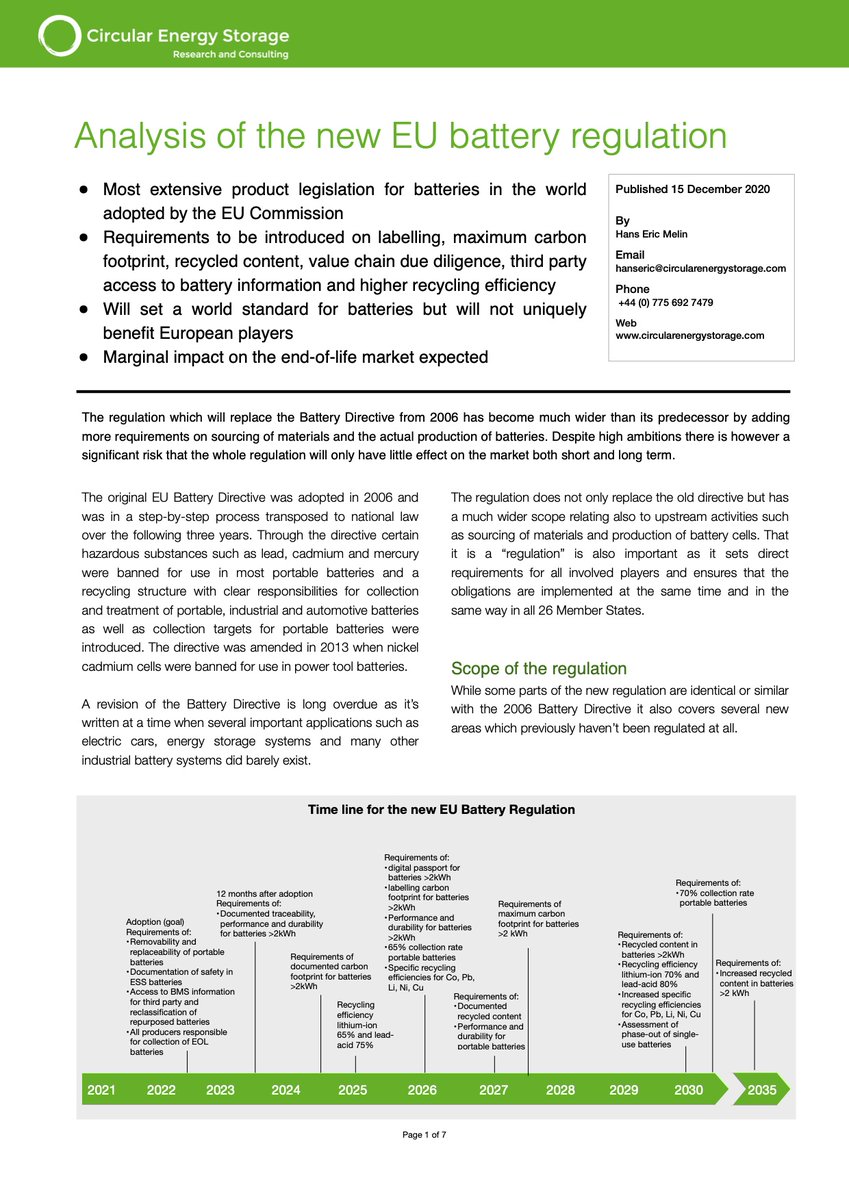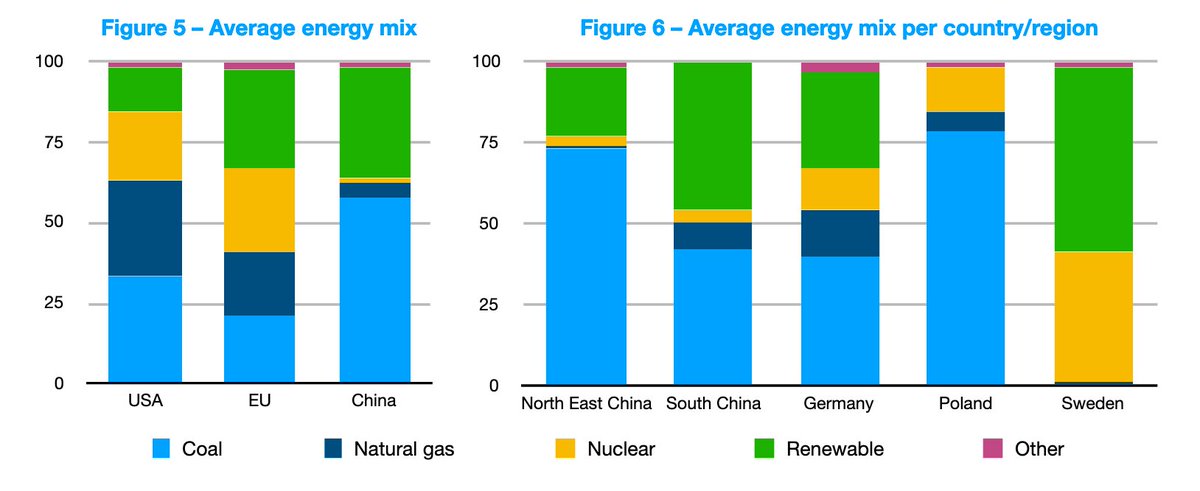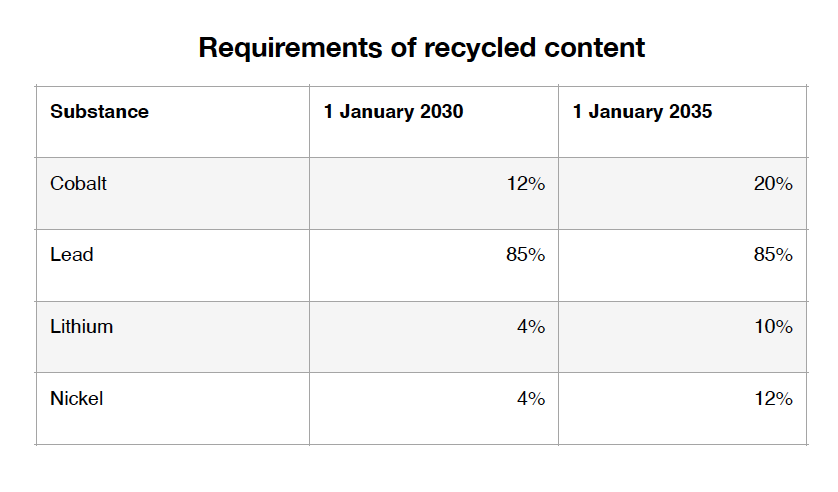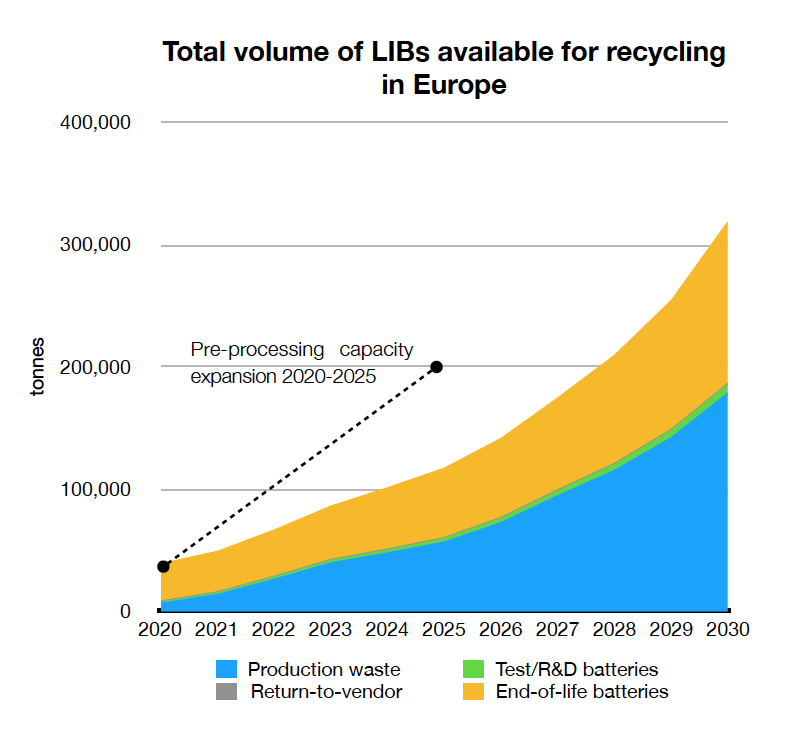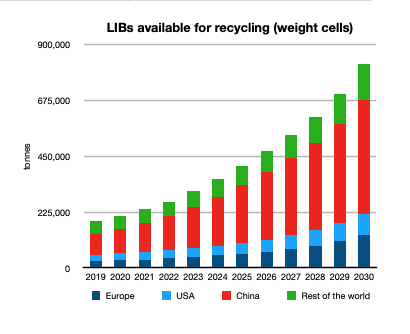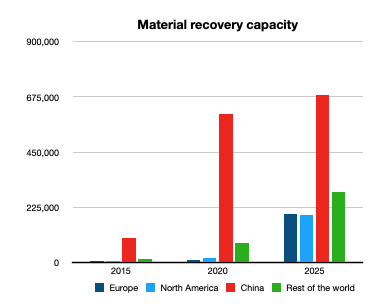The new EU Battery Regulation is the most progressive product legislation in the world. But what does it actually mean for the battery value chain? A new analysis is available for subscribers of CES Online. http://www.circularenergystorage.com
Summary in this (long) thread. 1/13
Summary in this (long) thread. 1/13
The new regulation introduces requirements on labeling, maximum carbon footprint, recycled content, value chain due diligence, third party access to battery information and higher recycling efficiency and collection targets. 2/13
The assessment of the carbon footprint takes carbon emissions for individual batteries, produced in specific plants, into account together with the battery’s expected lifetime. Essentially what I proposed in this analysis for @transenv https://www.transportenvironment.org/sites/te/files/publications/2019_11_Analysis_CO2_footprint_lithium-ion_batteries.pdf 3/13
However there is no threshold for the carbon footprint until 2027. And the threshold is not yet defined. With battery plants mushrooming in both nuclear/hydro-intensive Nordics&FR and fossil fuel-intensive DE/PL/HU the legislator has a delicate task defining it. 4/13
Another bold step is due diligence and 3rd party certification of producers’ supply chain, regardless of size of the producer (only for batteries >2kWh). Applies already 12 months after the legislation will enter into force – big challenge for small producers and importers. 5/13
Recycled content in batteries from 2030. The targets will be very difficult to achieve with EOL batteries available in Europe. However the regulation says “waste” and not “waste batteries” which opens up for use of production scrap. As long as the scrap stays in Europe. 6/13
On the other hand, there is nothing that says that recycled content must come from Europe. Might give Asian recyclers/material producers with bigger scale and access to more recyclables an advantage. 7/13
We expect regulations to have only a marginal effect on the EOL market next 10 years. Req on rec content can facilitate fund-raising for recyclers > contribute to more competition for material. Still, the destiny of batteries are usually determined before they become waste. 8/13
The clarity of 2nd life is welcome but will not necessarily change anything. It is already happening. Either initiated by OEMs before the battery becomes waste (where regulations don’t apply) or through ATFs which sell battery modules where access to BMS is not essential. 9/13
That OEMs must grant access to BMS is a very bold move and I expect it to meet significant resistance both before and after the legislation has been fully adopted. Doesn’t fundamentally change anything but open up for more 3rd party companies to engage in 2nd life. 10/13
My biggest concern is that European companies are not best suited to meet the requirements in the new regulation but incumbent players in Asia are far better positioned. There is a tone of complacent optimism in Europe – not least when it comes to the end-of-life market. 11/13
The last days I have heard Europe being leader, first mover and front-runner in the battery value chain. That’s pretty cocky for a market with only around 10% of the manufacturing capacity and even less primary and secondary raw materials production. 12/13 https://twitter.com/sdmoores/status/1320438813987115010?s=20
Conclusion: EU will have a regulation with the ability to set unparalleled sustainability standards for industrial products which is amazing. But, we are doing it in a field where other parts of the world control the value chain. That trickiness is worth some recognition. 13/13
Bonus track: The next 7 years we will debate carbon footprint, supply chain practices and recyclability for batteries without (AFAIA) similar req on transparency for the fossil fuel industry/ICE cars. Busy times @AukeHoekstra, @MLiebreich, @amiller_bmi @juliepolie @The_PlugSeeker

 Read on Twitter
Read on Twitter